The Royal Navy has formally accepted its first autonomous minesweeping systems into service, delivering a long-awaited capability aimed at countering modern naval mine threats, according to a press release.
The system, known as SWEEP, was developed and manufactured in the UK by Dorset-based TKMS Atlas UK Ltd under a £25 million contract. It marks the Royal Navy’s first operational minesweeping capability since 2005 and is intended to support future autonomous mine countermeasures as outlined in the government’s Strategic Defence Review.
SWEEP combines unmanned surface vessels with remotely controlled payloads designed to detect and neutralise digital sea mines. These mines are capable of identifying the acoustic and magnetic signatures of ships and submarines. The system’s autonomy allows it to be operated remotely from land or sea-based command centres, increasing crew safety while maintaining sea lane access.
Jonathan Reed-Beviere, Mine Hunting Capability Programme Director for the Royal Navy, described the system as “truly transformational,” noting that it can simulate a ship’s signature to safely detonate sea mines. “The portable, flexible system is vital to protecting ships from modern mine threats,” he said, “and will restore a minesweeping capability the Royal Navy has lacked since 2005.”
Three SWEEP units have been delivered, and the Ministry of Defence says the contract has supported 55 highly skilled jobs in Dorset and across the UK. The systems are designed to integrate with other autonomous mine warfare platforms, including the Maritime Mine Counter Measures (MMCM) programme and SeaCat unmanned underwater vehicles.
Defence Minister Maria Eagle said the introduction of SWEEP aligns with the UK’s shift toward a hybrid naval force. “This is the first time that the Royal Navy has autonomous minesweeping capability available, delivering on the Strategic Defence Review’s vision,” she stated. “This investment supports highly skilled jobs… and helps to keep Britain and our sailors safer.”
Andy Lapsley, Mine Hunting Capability Team Leader at DE&S, added that the systems are intended to support freedom of manoeuvre for UK naval assets. “These three SWEEP systems will help to ensure Royal Navy personnel can combat the evolving global threat of naval mines more effectively and more safely,” he said.
TKMS Atlas UK Managing Director Antoni Mazur called the entry into service “an incredibly proud moment,” highlighting the company’s longstanding work with the Ministry of Defence and the system’s UK-based production.
The acceptance of SWEEP adds to a growing portfolio of autonomous systems entering naval service, reflecting broader defence goals to modernise the fleet and reduce risk to personnel through increased automation.


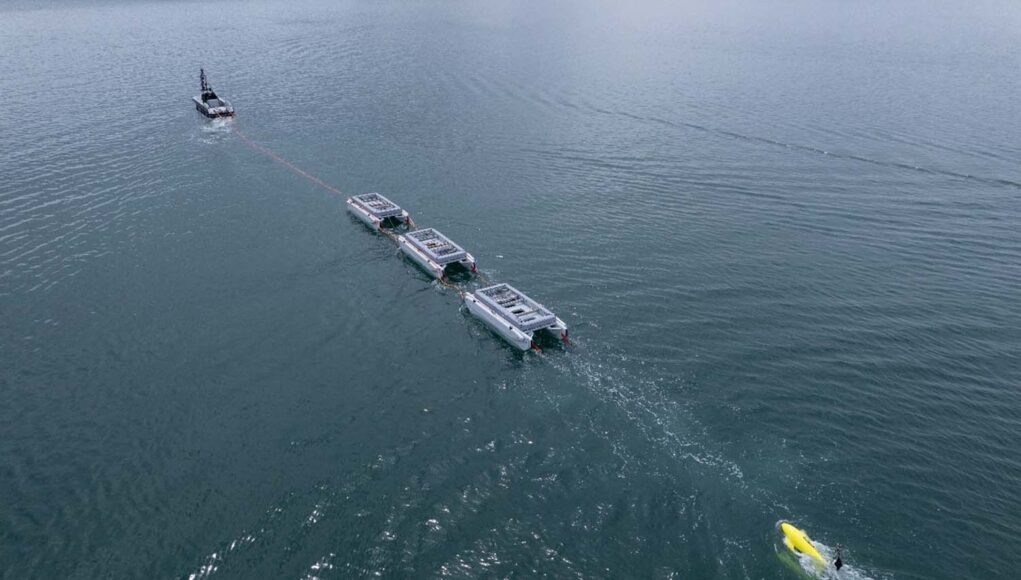
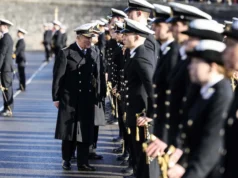
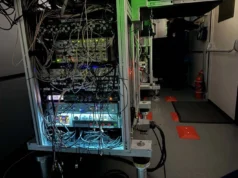
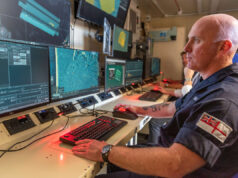
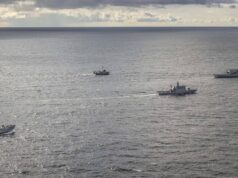
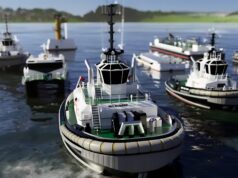

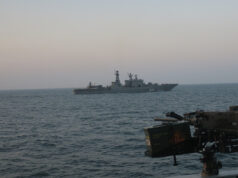
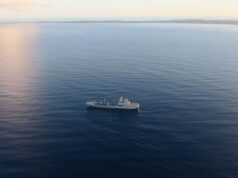
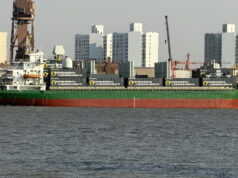
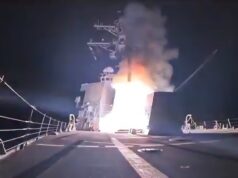

What does a “system” comprise?
The new Sweep System comprises of, ” 4 new handles and 6 new heads”.
Cushty.
a skill that the Americans couldn’t match in their LCS design and operatikn.
@halfwit: There’s a picture of them, what more do you need? XD
Hi Daniele, it looks like 1 system includes 1USV with three ‘sense and avoid’ units in tow (as pictured at top), as well as a TEU control centre. The USV has C3 autonomy, and can be programmed with the 3 S&A units into different ‘sweeping configurations’. USV contains a large power pack so the Sweeper units can detect the mines and cycle through acoustic effects to find the correct ‘trigger signature’ for a particular mine. Will be used for digital mines only as far as I can tell. Just had a browse of the Atlas E website and they have a promotional style pdf – not a great deal of info other than this^
Morning Nate.
Thank you.
I’ve always struggled to get my head round these things vs conventional MCMV that at least can self deploy and do other stuff.
This is once again another fantastic development showcasing Britain’s World class state of the art, Sweeping edge technology designed to keep the vast Oceans and waterways free from threats.
I can now go RC Boating on Henley boating lake without fear of being blown to smitherines.
“It’s a big arsed Ocean”.
“We’re going to need a bigger boat”.
“One Ping”.
There’s more but it’s early.
Aah I always knew you were a posh boy
Only one half, Mother was a Henley Lass and Father was a Cockney Barrow Boy, When they went shopping, he used to push her around something rotten.
🛒🛒🛒
Call me an old pessimist, but it’s mcm on the cheap. It won’t work when needed and all sorts of excuses will fly around ie, the wrong type of sea and “what do you expect for £25 million”.
OK, You’re an old pessimist.
I thought so too, I was just throwing it out there.
I was only responding to your request.
However, I do find it hard to believe this system is a 24/7 system in anything but calm conditions and in places like the Clyde/Gare Loch, Plymouth, Portsmouth, Milford Haven and a few other localised inshore places. If so then I’m sure they will be smash it but in more open water ?
“Look after your broom”.
It’s not cheap, it’s world beating. MCM in plastic manned boats is like hunting elephant guns with elephants, it’s a suicide mission. As the article points out we haven’t had mine sweeping capability since 2005. modern mines are torpedos that sit on cluttered sea beds lying in wait and can track ships with multiple sensors. They are nearly impossible to find.
That’s why we developed this system and it’s better than anything else in the world.
It can also be deployed by a frigate anywhere in the world instead of a barley armed plastic boat that needs to be transported over major ocean distances.
I look forward to lots and lots of overseas orders.
Thank you for highlighting the systems advantages, you are obviously more clued up on this system than I am.
So what searches the waters for the Frigate so it can then safely deploy? Itself? A la kamikaze like a T21 in the Falklands War?
And what of sea states?
And which Frigates!? We barely have any. Surely not a precious T26 in littoral waters close to an enemy shore where these choke points are.
So that leaves 5 T31. Some of which won’t be available.
Ah, they say, it can deploy on a Atlas! Wonderful, so that is about 12 of the 22, those of which will have lots of other tasks already as the system cannot self deploy. Likewise 8 C17, which you were saying were not so necessary months ago now we are NATO orientated and do not need so many Transports! ( we do!! )
And what was the cost again, so far, for how many toy boats that can do this safely and remotely, but which are in short supply, cost a fortune, and cannot self deploy, or take on other roles, not even as a command for up and coming commanders cutting their teeth.
As you can tell, I remain skeptical with this stuff!
Meanwhile, other nations have bought new MCMV to act in concert with this stuff, as we throw ours away, prematurely, as usual.
What do those dedicated MCMV vessels bring to a fight that something like RFA stirling castle does not? A 40mm bofors and a mission bay with massively increased cost, how useful is that?
Yes this system will be deployable by T26 and or T31, The system is capable of self deploying over distance. Sea state will be an insure but when is sea state not an issue? It’s rarely an issue in confined water which is typically exactly where mines are located.
The ability to fly in a mine hunting team and conduct operations from shore is a massive capability enhancement. I’m not sure why anyone would be against that.
People are against it because they’re Luddites who crave the days of the Empire and squadron of battlecruisers.
Autonomous mine hunting is obviously the best way forward, those that don’t think so should volunteer to go out into a minefield and try doing the job…
You speak sense.
For a start. They exist.
Have you heard the reports we may be pulling our sole Escort and 2 MCMV out of the Gulf?
Just as our Naval facility there was built, invested in.
The USN valued the RNs contribution and its expertise in MCMV warfare.
We once had 7 or 8 vessels there.
Soon, maybe none.
And a RN officer was deputy commander, a role more ambitious nations like France will jump at for the prestige.
Where are the Escorts to deploy these systems? Where are the morher vessels?
Do you read Sir Humphrey on X? He has a good piece on this.
Still 55 jobs!!!
So, if they replace the front end of a particular sweep one year, and the back end the next year, is it still the same sweep or can it be designated as new one? Asking for a friend in the MOD.
It’s then called a sooty
Can these be piggy back on larger platforms and be deployed by them? Persian Gulf is a good example as I do struggle to understand how a remote towed platform, no matter how modern the sensors, can get around to where it’s needed and how controlled? By remote from land, and ship/warship? Is this MCM on the cheap?
Exactly, what type/size ship will serve as the deployment vessel? Existing asset or future acquisition?
4 mother vessels wanted, apparently.
Is there a bloke fully employed to invent acronyms which match the platforms? What does SWEEP mean? I can make one up but it will be shite!
Safe Waters Emersive Equipment Programme.
🚤🚤
Don’t ask me I’ve only just found out why Rarden, Aden, Sten and Bren all end with EN. Doh!
EN for Enfield, as in the site of the gun factory.
Enfield I think.
I suspect once and if the Ukraine war ends there will be a lot of need for mine sweeping, at which point we will find out if this smoke and mirrors or actually a decent system.
Then we will see the Ukraines own Ships probably working alongside other systems.
All they need now is to introduce a mine counter measure system called SOOTY to complement SWEEP
As they can simulate another ships signature and deal with mag mines ,are they just a one trick suicidal Drone ? Just asking for a muppet .
Well, we don’t have any fleet strength, or diplomatic clout, or effective presence in that part of the world; but we can sweep mines like it’s 1939.
The Mine Hunting Capability Programme is proving to be another yet an expensive penny-wise but pound-foolish disaster, leaving the UK taking horrendous security risks as we are reduced to a few uncrewed craft that can only operate in calm seas within line-of-sight of their land based remote operators. RFA Stirling Castle has now been laid up for over a year and I wouldn’t be surprised to soon hear that she has been sold at a huge loss to the taxpayer. 3 of 6 remaining Hunt’s have had to be allocated to Clyde/Faslane to protect the nuclear deterrent, another two are supposedly in refit, leaving 9MCM in Bahrain with just one – and she’s due to return to the UK in early 2026. A crash programme to build a new class of lean crewed mine hunters is the obvious sensible solution, but when did the MOD, Treasury and UK government all last agree to do that – 1950?